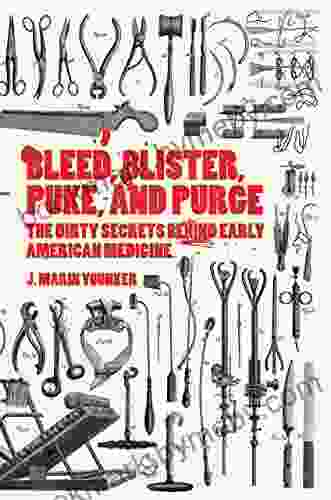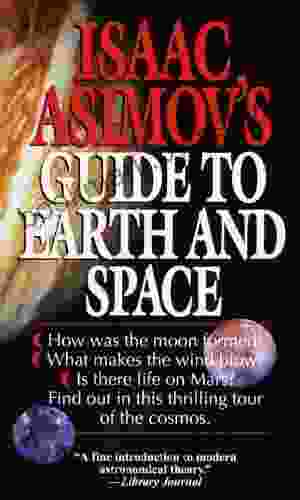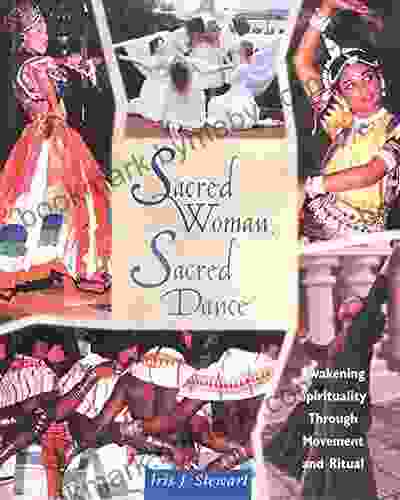The Dirty Secrets Behind Early American Medicine

In the quaint era of early America, where tales of pioneering spirit and colonial charm abound, there lies a hidden truth about medical practices that would send shivers down the spine. Behind the facade of apothecaries and healers, a sinister underbelly concealed a world of questionable treatments, unhygienic conditions, and a profound lack of scientific understanding.
4.5 out of 5
| Language | : | English |
| File size | : | 6120 KB |
| Text-to-Speech | : | Enabled |
| Screen Reader | : | Supported |
| Enhanced typesetting | : | Enabled |
| Word Wise | : | Enabled |
| Print length | : | 114 pages |
Bloodletting: A Cure for All That Ails
Imagine, if you will, a patient suffering from a throbbing headache, their veins bulging with accumulated blood. To the early American physician, this called for a drastic intervention: bloodletting. Armed with a lancet, they would make a deep incision in the patient's arm, allowing the precious fluid to pour forth in a stream. The belief was that by removing the excess blood, the body would be restored to balance and the ailment would miraculously vanish.
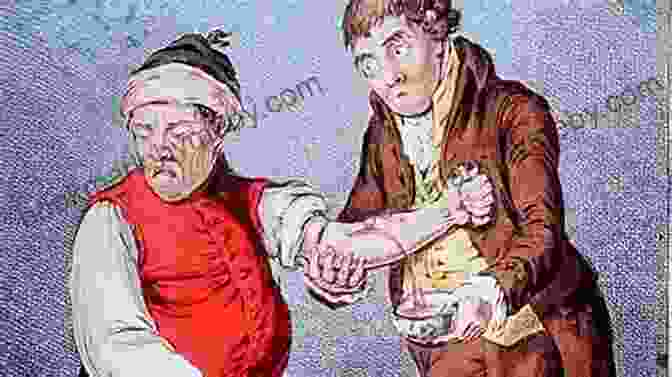
The popularity of bloodletting stemmed from the theory of humors, which held that the body contained four vital fluids: blood, phlegm, yellow bile, and black bile. An imbalance in these humors was believed to cause disease, and bloodletting was seen as a way to restore harmony. However, the practice was not only ineffective, but downright hazardous. Excessive blood loss could lead to weakness, dizziness, and even death.
Trepanning: Drilling Holes in the Skull
For ailments of the head, early American doctors often resorted to a particularly gruesome procedure: trepanning. Using a hand-held drill, they would bore a hole into the patient's skull, releasing what they believed to be the pent-up pressure or evil spirits causing the affliction. The procedure was often performed without anesthesia, and the success rate was abysmal.
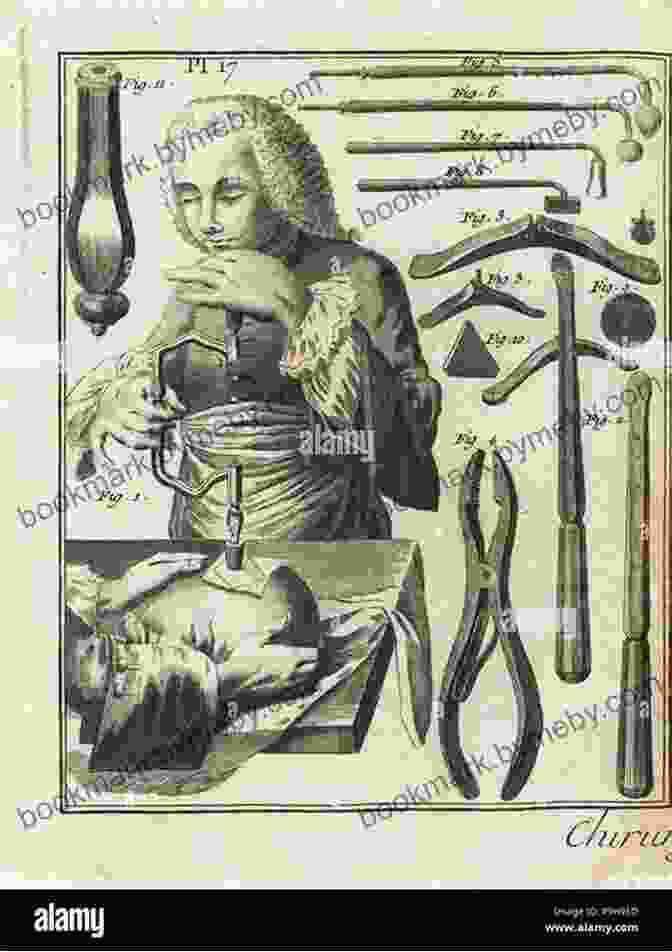
In some cases, trepanning did provide temporary relief for severe headaches or seizures. However, it carried a high risk of infection, brain damage, and even death. The procedure is a testament to the desperate measures that early American physicians were willing to take in their quest to heal.
Leeches: Sucking Away the Sickness
Leeches, those slimy bloodsuckers, played a surprisingly prominent role in early American medicine. Physicians would apply leeches to the skin to draw out "bad" blood and toxins. They were seen as a cure for everything from headaches to fever to inflammation.
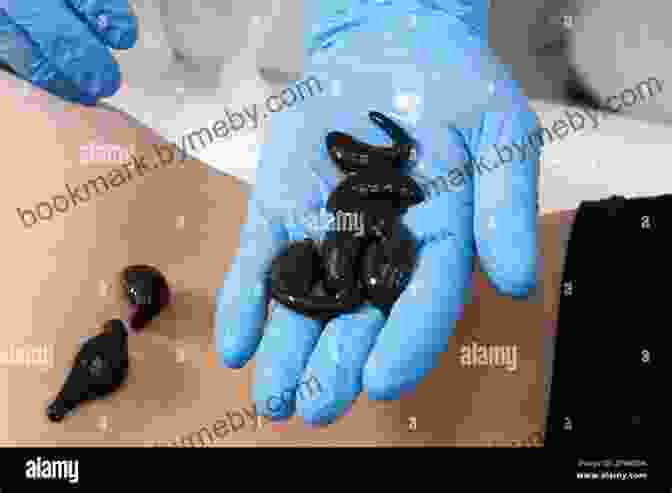
While leeches do have anticoagulant properties that can help promote blood flow, their use in medicine was largely based on superstition and misinformation. The practice was often ineffective and could lead to infection and scarring.
Quackery and Snake Oil Salesmen
In the absence of effective treatments, many early Americans turned to quacks and snake oil salesmen who peddled miracle cures and elixirs. These charlatans preyed on the desperation of the sick and injured, promising instant relief and miraculous recoveries.

Snake oil, the most notorious of these remedies, was typically a mixture of alcohol, herbs, and animal fats. It was touted as a cure for a wide range of ailments, from rheumatism to cancer. However, it was nothing more than a placebo, and in some cases, it could even be harmful.
The world of early American medicine was a far cry from the scientific and evidence-based practices of today. It was a time of desperation and superstition, where misguided treatments and unsanitary conditions often did more harm than good. While we may marvel at the advancements in medical science that have occurred since then, it is important to remember the grim origins of the field and the lessons we have learned from the mistakes of the past.
By uncovering the dirty secrets behind early American medicine, we not only gain a deeper understanding of the challenges faced by our ancestors, but we also appreciate the incredible progress that has been made. The horrors of bloodletting, trepanning, and quackery have been relegated to the annals of history, replaced by a system of healthcare that is based on scientific evidence and ethical principles.
As we navigate the complexities of modern medicine, let us not forget the lessons learned from the past. May we always strive for evidence-based treatments, ethical practices, and a compassionate approach to patient care.
4.5 out of 5
| Language | : | English |
| File size | : | 6120 KB |
| Text-to-Speech | : | Enabled |
| Screen Reader | : | Supported |
| Enhanced typesetting | : | Enabled |
| Word Wise | : | Enabled |
| Print length | : | 114 pages |
Do you want to contribute by writing guest posts on this blog?
Please contact us and send us a resume of previous articles that you have written.
 Book
Book Novel
Novel Page
Page Chapter
Chapter Text
Text Story
Story Genre
Genre Reader
Reader Library
Library Paperback
Paperback E-book
E-book Magazine
Magazine Newspaper
Newspaper Paragraph
Paragraph Sentence
Sentence Bookmark
Bookmark Shelf
Shelf Glossary
Glossary Bibliography
Bibliography Foreword
Foreword Preface
Preface Synopsis
Synopsis Annotation
Annotation Footnote
Footnote Manuscript
Manuscript Scroll
Scroll Codex
Codex Tome
Tome Bestseller
Bestseller Classics
Classics Library card
Library card Narrative
Narrative Biography
Biography Autobiography
Autobiography Memoir
Memoir Reference
Reference Encyclopedia
Encyclopedia Tami Charles
Tami Charles Kashmir Maryam
Kashmir Maryam J Kindheart
J Kindheart Isee Exam Preparation Experts
Isee Exam Preparation Experts Isaac Du Toit
Isaac Du Toit Jacqueline Kinney Johnson
Jacqueline Kinney Johnson Jack Andraka
Jack Andraka Isaac Millman
Isaac Millman Lisa Ferrel
Lisa Ferrel Orestes Lorenzo
Orestes Lorenzo James Atlas
James Atlas Kimberly Brubaker Bradley
Kimberly Brubaker Bradley J F Holmes
J F Holmes Sahara Foley
Sahara Foley Mark Skousen
Mark Skousen J D Ware
J D Ware James A Afremow
James A Afremow Mark Cucuzzella
Mark Cucuzzella Maggie Dent
Maggie Dent Jack L Roberts
Jack L Roberts
Light bulbAdvertise smarter! Our strategic ad space ensures maximum exposure. Reserve your spot today!

 Alec HayesEquestrian Excellence: Exploring the Daring Feats of Georgian Trick Riders in...
Alec HayesEquestrian Excellence: Exploring the Daring Feats of Georgian Trick Riders in... Octavio PazFollow ·12k
Octavio PazFollow ·12k Jared PowellFollow ·5.2k
Jared PowellFollow ·5.2k Miguel de CervantesFollow ·7.1k
Miguel de CervantesFollow ·7.1k Eric HayesFollow ·10.7k
Eric HayesFollow ·10.7k David Foster WallaceFollow ·19.2k
David Foster WallaceFollow ·19.2k Theo CoxFollow ·11.6k
Theo CoxFollow ·11.6k Quentin PowellFollow ·5k
Quentin PowellFollow ·5k Cruz SimmonsFollow ·5.5k
Cruz SimmonsFollow ·5.5k
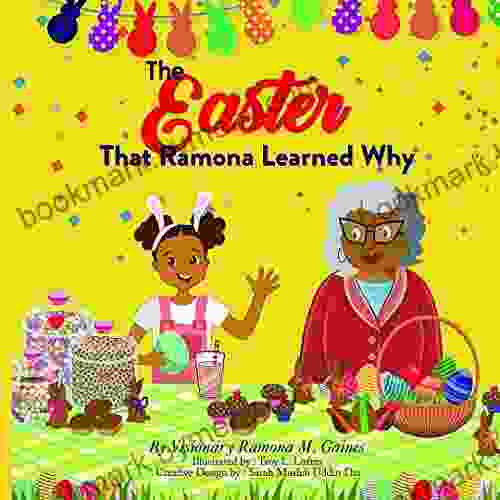
 Phil Foster
Phil FosterThe Unforgettable Easter: Ramona's Journey of Discovery...
Embark on Ramona's Extraordinary Easter...

 Levi Powell
Levi PowellThe Old City and Mount of Olives: A Journey Through...
Jerusalem, a city etched into the annals of...
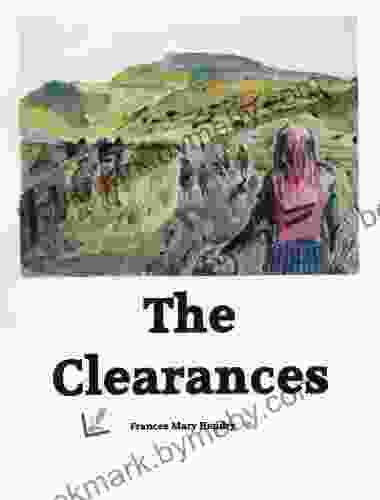
 Henry Hayes
Henry HayesThe Clearances: A Journey Through Scotland's Hidden...
In the 18th and 19th...
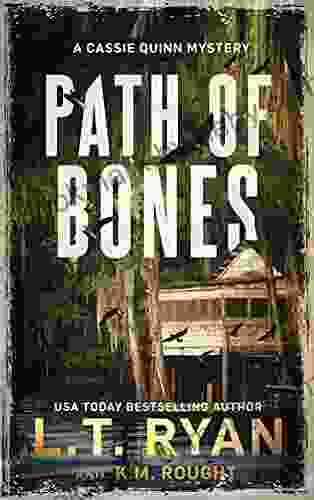
 Edward Reed
Edward ReedUnravel the Enigmatic 'Path of Bones' with Cassie Quinn...
Step into the...
4.5 out of 5
| Language | : | English |
| File size | : | 6120 KB |
| Text-to-Speech | : | Enabled |
| Screen Reader | : | Supported |
| Enhanced typesetting | : | Enabled |
| Word Wise | : | Enabled |
| Print length | : | 114 pages |


